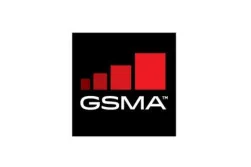High-speed Internet use continues to grow in OECD countries with mobile broadband penetration reaching 95 subscriptions per 100 inhabitants in June 2016, up from 86 per 100 a year earlier, according to data released by the OECD.
The addition of 123 million new mobile broadband subscriptions in the 35-country OECD area made a year-on-year rise of 11.3%, driven by continued growth in the use of smartphone and tablets, and lifted the OECD total to 1.214 billion subscriptions in a population of 1.27 billion people.
Twelve countries, Japan, Finland, Sweden, Denmark, the US, Estonia, Australia, Korea, Norway, Iceland, New Zealand and Switzerland, in descending order of mobile subscriptions per capita, now lie above the 100% penetration threshold, up from nine countries a year ago.
Fixed-line broadband subscriptions in the 35-country OECD area reached 380 million as of June 2016, up from 363 million a year earlier and making an average penetration of 29.8%, up from 28.6%. Switzerland leads the pack with a penetration rate of 51 subscriptions per 100, followed by Denmark (43%), the Netherlands (42%), France (41%) and Korea (40%).
DSL remains the prevalent technology, making up 44.7% of fixed broadband subscriptions, but it continues to be gradually replaced by fibre, now accounting for 20.1% of subscriptions thanks to a 16% jump in fibre subscriptions since June 2015. Cable (32.2%) made up most of the rest.
Data on machine-to-machine communications, such as for Internet-connected vehicles, show that Sweden, New Zealand, Norway, Finland and the Netherlands remain the leaders in the number of M2M SIM cards in use, with the caveat that data is not yet fully comparable for all countries. Sweden counts 77 M2M SIM cards per 100 inhabitants - a much higher level than for most other OECD countries that provided data. Overall, M2M/embedded mobile cellular subscriptions grew by almost 20% in the last year in countries were the data was available.



















